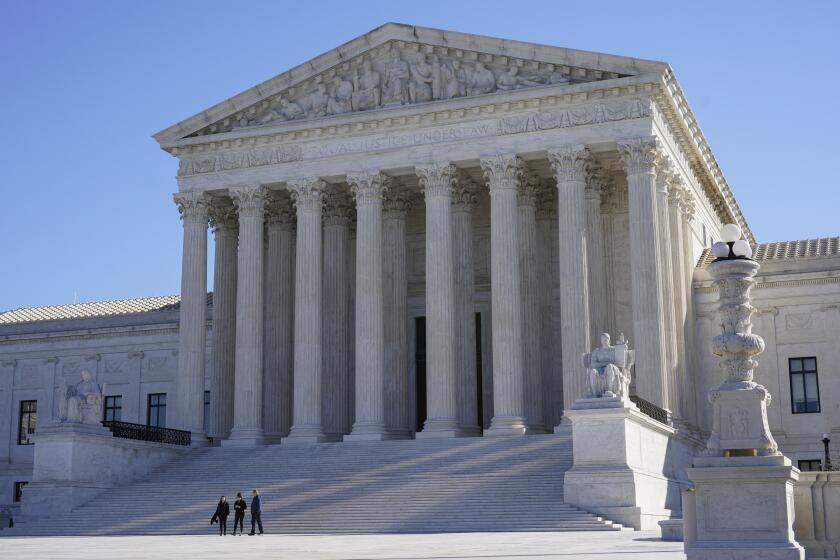Voters will decide on gay marriage
- Share via
Setting the stage for a political showdown, the California secretary of state today said an initiative barring gay marriage had enough signatures to qualify for the Nov. 4 ballot.
The proposal would amend the state Constitution to define marriage as a union “between a man and a woman” and undo last month’s historic California Supreme Court ruling, which found that discrimination on the basis of sexual orientation was unconstitutional.
A coalition of religious and conservative activists submitted 1.1 million signatures for the ballot measure. Random sampling by Secretary of State Debra Bowen found that enough legitimate signatures had been collected.
Many opponents of same-sex marriage saw the high court’s ruling as a rejection of past ballot measures against the practice, most recently Proposition 22, which defined marriage as between a man and a woman. It passed in 2000 with 61% of the vote.
Supporters of the latest initiative described Monday’s certification as “great news” but acknowledged that recent surveys had shown opposition to same-sex marriage weakening in recent years.
“It will be tough,” said Ron Prentice, chairman of the Protect Marriage campaign. “However, the vast body of research . . . confirmed that there is still a majority in California that will vote to protect historic marriage.”
Prentice said his campaign had already begun drawing on the support and resources of local religious groups and other organizations for an election battle he expected to win.
He noted that a recent Los Angeles Times/KTLA poll found the proposed amendment was leading 54% to 35% among registered voters.
But opponents of the ballot initiative said they drew heart from signs that voters view gay marriage more favorably than they did nearly a decade ago.
A Field Poll published last week found that 54% of registered voters opposed the measure, while 40% supported it.
“Things have changed dramatically in California,” said David Codell, an attorney with Equality for All, a coalition of gay rights organizations that is campaigning against the amendment initiative.
Codell said the state’s domestic partnership law had helped sway many voters on the issue.
California has more than 100,000 households headed by gay couples, about a quarter with children, according to 2000 census data.
“Californians have seen for years that same-sex couples are capable of participating fully in society as families recognized by law,” he said. “Nobody is harmed when same-sex couples marry, and everyone is benefited.”
In the wake of the Supreme Court ruling, local officials throughout the state are expected to begin performing same-sex marriage ceremonies this month. If the ballot measure passes in November, its effect on same-sex marriages performed before the election is unclear. Prentice said he had reviewed competing legal opinions on the issue.
But he said he expected other groups that oppose same-sex marriages would consider challenging the marriages in court.
Garry South, a Democratic strategist, described the ballot measure as part of a decades-old strategy by California conservatives to use a wedge issue to mobilize support during a presidential election.
But he noted that the Supreme Court that ruled in favor of gay marriage is dominated by Republicans and said a Barack Obama victory for the Democratic Party nomination would probably bring out young voters in November more sympathetic to same-sex marriage.
“I don’t think there’s been a sea change in attitudes,” South said, “but it’s clear in the surveys that this is almost an even-steven issue in California.”
Allan Hoffenblum, a former GOP political strategist, said voters might be swayed by the high court’s ruling.
“They’re going to be seeing on TV gays getting married, then they’re going to be told, ‘No, we’re going to take that right away,’ ” said Hoffenblum, who publishes the nonpartisan California Target Book, which analyzes political races. “I think that changes the dynamics of the whole thing.”
More to Read
Get the L.A. Times Politics newsletter
Deeply reported insights into legislation, politics and policy from Sacramento, Washington and beyond. In your inbox twice per week.
You may occasionally receive promotional content from the Los Angeles Times.











